Weather has really made an impact on the programme farms since the start of August. The prolonged spells of heavy rainfall have forced cattle to be housed on farms in the west and in Antrim.
In other parts of the country, the farms are faring much better and are still carrying all, or most, of the herd at grass.
This week, we feature two farms in Co Tyrone that run spring- and autumn-calving herds to see how they are dealing with early housing of cattle.
Oliver McKenna: Eskra, Co Tyrone
Housing leads to early weaning
Grazing ground has been under pressure since early August with the downturn in the weather.
With ground getting wet, I split cattle into smaller groups to ease the stocking rate at grass and delay housing.
But with heavy rainfall, there was little opportunity for land to dry out.
The first cattle to be housed were spring-calving cows with heifer calves back in early August.
Spring cows and bull calves were housed later in August.
As cattle were housed in stages, I bought silage bales rather than open the pit, as I was hoping weather would improve and allow cattle back to grass. I would have fed close to 50 bales during August.
By last weekend, all cattle were housed with the exception of seven in-calf heifers due to calve in spring and 13 maiden heifers to be bred this autumn.
Spring herd
Spring-calving cows are on ad-lib first-cut silage. When analysed, it had dry matter of 30%, protein of 12.2% and D-value of 68.
My plan over the next week is to start weaning spring-calving cows.
The bull calves are eating 2kg/day of a 16% protein ration, consisting of barley, distillers and soya hulls which cost £185/t.
They have received their booster shot for pneumonia and will be wormed again using Levacide. This will be followed by another worm drench next month, which should cover them for the winter.
Once weaned, I hope to let the bull calves back out to grass to ease the pressure on housing and feed.
If weather allows, I would like to keep them out until November before rehousing and putting them on to a finishing diet.
Autumn herd
The autumn cows are almost finished calving, with just two cows left from the group of 26 animals. They are also eating 40kg/day of first-cut silage along with 1kg/day of ration.
Cows are holding condition, which is important with the breeding season for the autumn cows due to start next month.
Issues
Early housing is far from ideal. As things stand, I will be short for silage. However, I still have some ground I was planning to cut for silage to boost fodder reserves. But this is now totally dependent on the weather.
If I can let weaned calves back out to grass, this will be a saving on silage. I scanned 35 spring cows and had three barren cows which will be culled after a short feeding period. There may be a few more cull cows to join them, which will ease the pressure on housing and feed.
Another problem is heavy covers of grass that need to be grazed off before winter. If cattle cannot return to grass, I may have to look at bringing in sheep for winter grazing.
Declan Rafferty and Aidan Quinn: Pomeroy, Co Tyrone
Priority cattle housed in Pomeroy
Ground started to deteriorate quickly in August with the heavy rainfall, leaving us with little option but to start housing cattle to prevent land from becoming severely poached.
Spring-calving cows with heifer calves and in-calf replacement heifers are still at grass.
We have 38 spring-calving cows housed since late August. The cows are still suckling bull calves, which would weigh 250kg to 300kg and coming close to weaning.
Before housing, we had reduced the size of stocking groups by spreading cows across the farm in smaller batches and it was working reasonably well. However, with no easing in the volume or frequency of rain, cows had to be housed.
Spring-calving cows are currently on ad-lib first-cut silage. A forage analysis indicated a feed value of 29% dry matter, 12% protein, 11.8 ME and 74 D-value.
While forage quality is excellent, protein levels are down on last year. We have a good reserve of silage in store, between first and second cuts and bales made from surplus grazing.
Calves have access to straw-bedded creeps and they are being fed 1kg of ration in the morning and again in the evening.
The ration is a purchased starter blend and will be fed for a short period before changing to a mix of barley, distillers, soya and soya hulls.
Straw was bought at £12/bale, which does not include any transport charge. We have plenty in store which will provide enough bedding for calf creeps, calving pens and feeding where necessary.
Autumn herd
There are 20 cows in the autumn herd and they finished calving this week. The cows are housed, with their calves also having access to straw-bedded creep areas.
After calving, autumn cows are moved on to ad-lib first-cut silage along with 1kg/day of ration. We have plenty of housing space to deal with early housing and there is a good supply of silage on farm also.
We have a few cull cows that will be offloaded inside the next few days. They have been finished on 5kg/day of ration.
The final group of cattle that is housed is our autumn-born heifers. They are on silage and 2kg/day of meal and will be bred in the coming months to join the autumn herd next year.
The spring-born heifer calves will be weaned in the next three weeks and hopefully remain at grass. Spring-born bulls will remain housed after weaning, as the feed value of grass will not support high levels of weight gain.





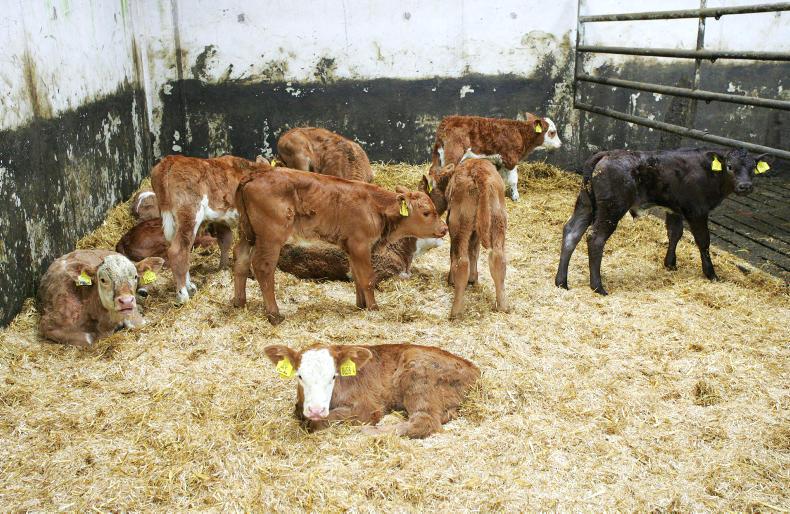
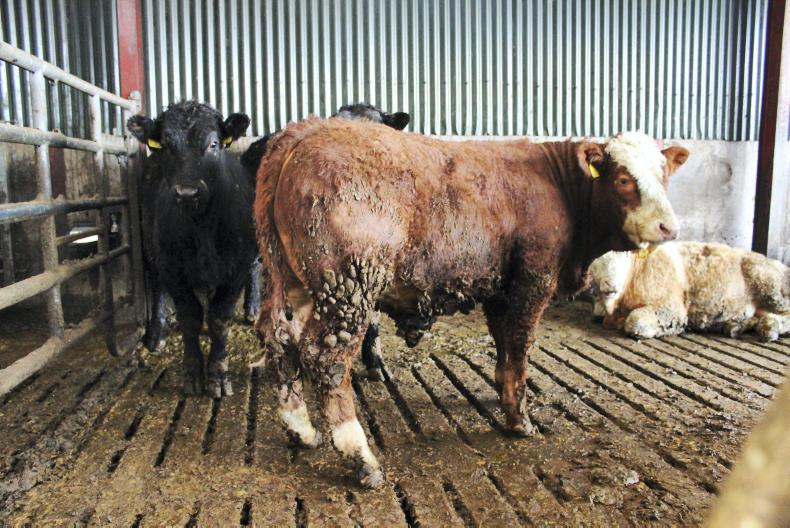

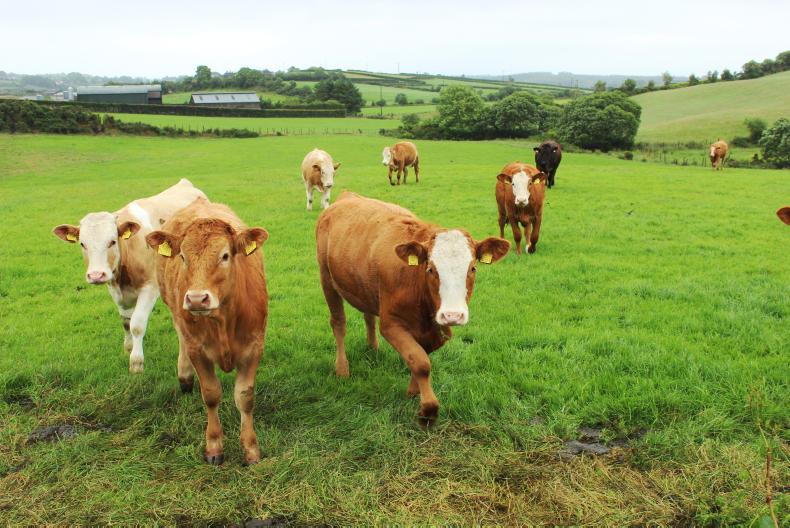
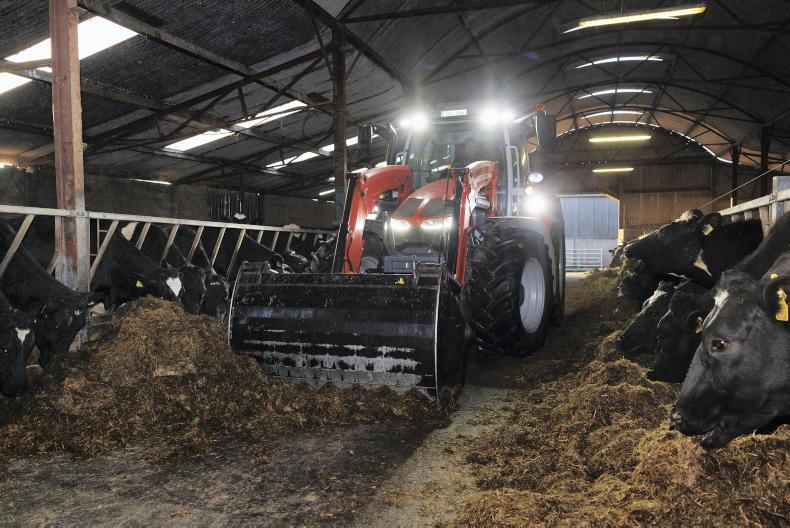
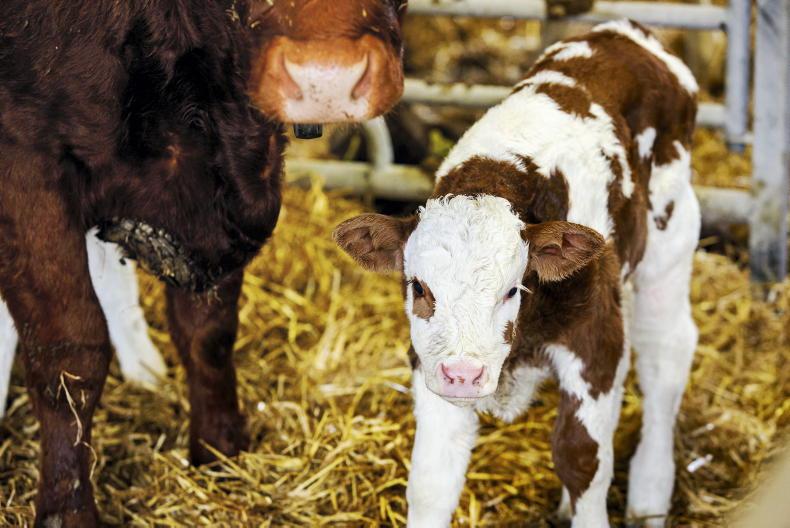
SHARING OPTIONS